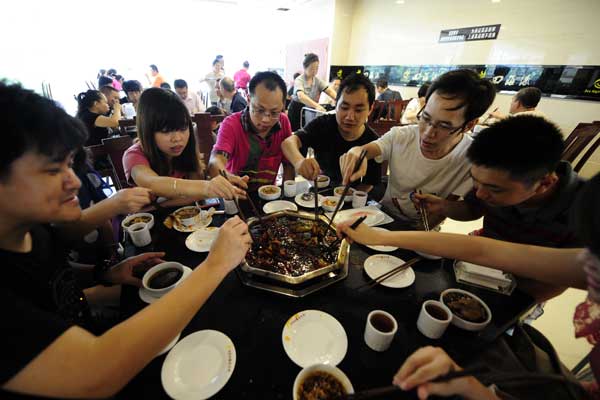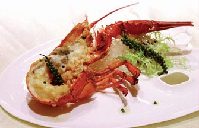Crazy about hotpot
 |
|
Sitting around a simmering pot and enjoying the freshly cooked food is part of daily life for most Chongqing people. |
This floor also demonstrates how the spicy hotpot went from being street food to a nationally celebrated dish during the War of Resistance against Japanese Aggression (1937-45).
| Taste of home |
| Crustacean sensation |
The third floor exhibits valuable pots and also highlights the history of hotpot, with particular emphasis on Chinese hotpot culture. The most prized collections are located on this floor, including a pot used in the Qing Dynasty (1644-1911), when Emperor Qianlong hosted a banquet for 1,000 elderly people, and a tri-colored glazed pot of the Tang Dynasty (AD 618-907).
The fourth and fifth floors are yet to open, but there are plans to open a high-end hotpot restaurant there.
Nie Ganru, 70, a hotpot fan and businessman, is the owner of the museum.
The energetic man has a passion for hotpot and has collected pots for more than 30 years.
"Every pot has a story," he says.
One of his most prized items is the tri-colored glazed pot of the Tang Dynasty, worth about 1.8 million yuan ($300,000). He bought it in Chengdu in 1998 for only 180 yuan.
"I was very lucky on that one," he recalls. "Some of my collection was easily acquired, I was sometimes lucky to find things on the street. And some were only acquired with much time and money. I flew all over the country for some pots, negotiating with the sellers to persuade them to sell the pot to me," he says, adding that whenever he travels to a new city, he will go to the grocery store to study pots.
Nie's lifelong dream has been to establish a hotpot museum to record hotpot stories, display his collection and promote hotpot culture.
Now, in the year of his 70th birthday, the museum has finally opened.
"Enterprises will decay. No business lasts forever. However, culture is eternal. The museum is what I will leave for my successors," he says.


















